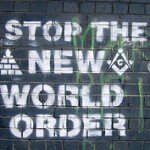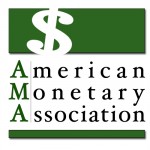 When last we left off with this encapsulated history of modern banking, there was no such thing as national coinage or currency – each individual bank produced its own money which, due to differing, values, didn't work well when it came to international trade. But then the year 1694 arrived on the scene, a date which might not live in worldwide infamy, though it should, for this was when a panicky King William III got himself into a financial pickle and made the mistake of turning to a cartel of wealthy men to bail him out. The leader of the cartel was a man named William Patterson and it was he who can be credited with the rise of the concept of a central bank and the subsequent ruination of the world economy thereafter. Events transpired thusly. Since King Willie's royal coffers were seriously short of money, Patterson and allies agreed to bail the king out with a six million dollar loan at 8% annual interest rate if he would grant two conditions.
When last we left off with this encapsulated history of modern banking, there was no such thing as national coinage or currency – each individual bank produced its own money which, due to differing, values, didn't work well when it came to international trade. But then the year 1694 arrived on the scene, a date which might not live in worldwide infamy, though it should, for this was when a panicky King William III got himself into a financial pickle and made the mistake of turning to a cartel of wealthy men to bail him out. The leader of the cartel was a man named William Patterson and it was he who can be credited with the rise of the concept of a central bank and the subsequent ruination of the world economy thereafter. Events transpired thusly. Since King Willie's royal coffers were seriously short of money, Patterson and allies agreed to bail the king out with a six million dollar loan at 8% annual interest rate if he would grant two conditions.
1. Patterson's group would receive an official charter naming them as the “Bank of England.”
2. The newly created Bank of England would have exclusive right to issue currency notes throughout the land.
This was the first time in history an institution was given a monopoly throughout an entire country allowing it to control the money supply. When the people or the king needed more money, the Bank simply printed it. In case this sounds eerily familiar to modern day banking, it is. Patterson's group saw the immense profit potential in printing and loaning money and only keeping a fraction of the amount in circulation held in reserve in case someone came in with a gold certificate and demanded to exchange it for an appropriate amount of the precious metal. Yes, they were literally making money for nothing and loaning it out to people at an annual interest rate. Within a few years, the British government was deeply indebted to the bank of England, giving this private financial institution a power never seen in human history.
Money and the ways humans interacted with it was changed forever. The wealth of a central bank came to rely upon the indebtedness of the citizenry and bankruptcy of the nation. Stayed tuned for next time for Part 3 in this series on the history of banking. Does the name Rothschild ring a bell?
The American Monetary Team
Flickr / Christian Cable

